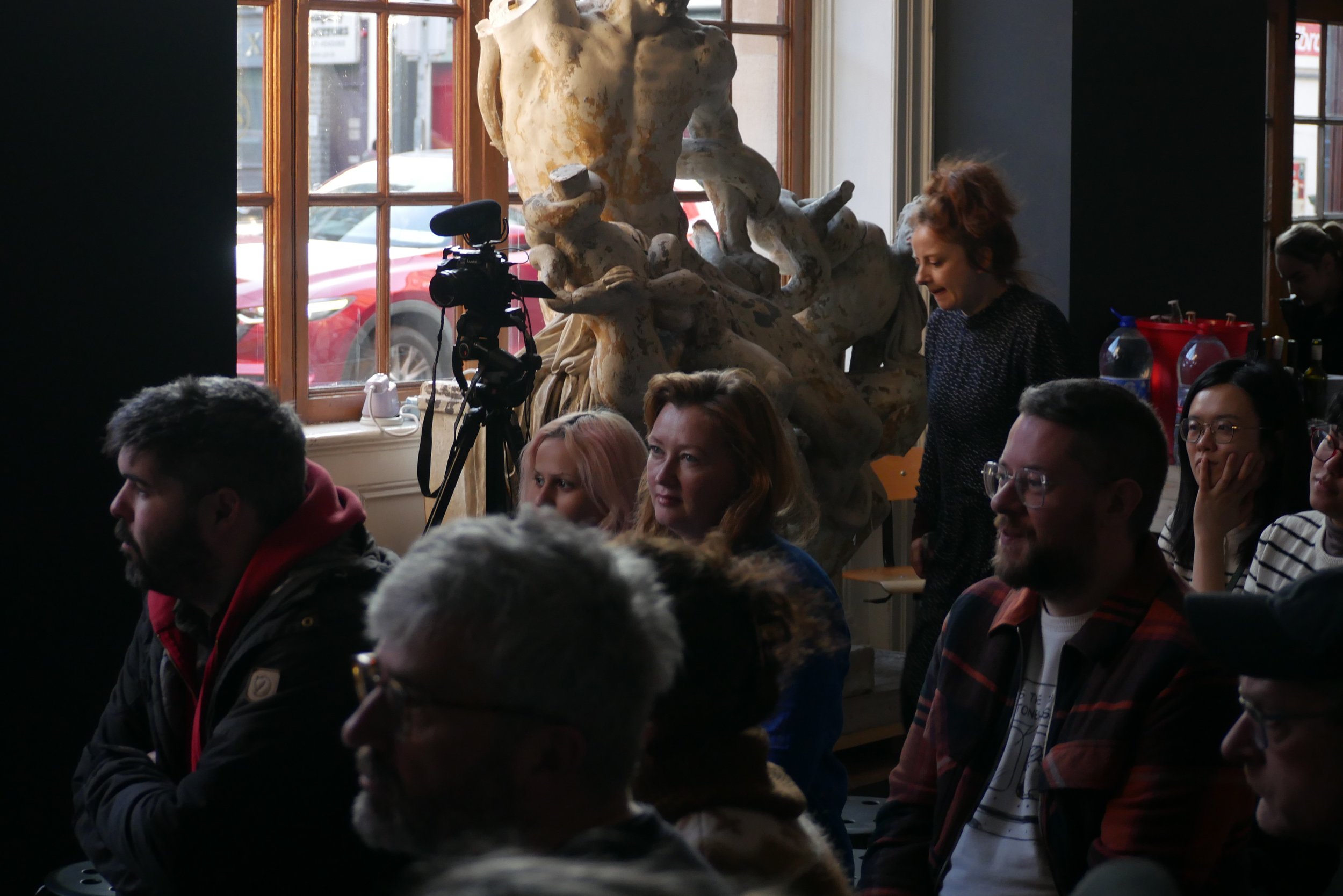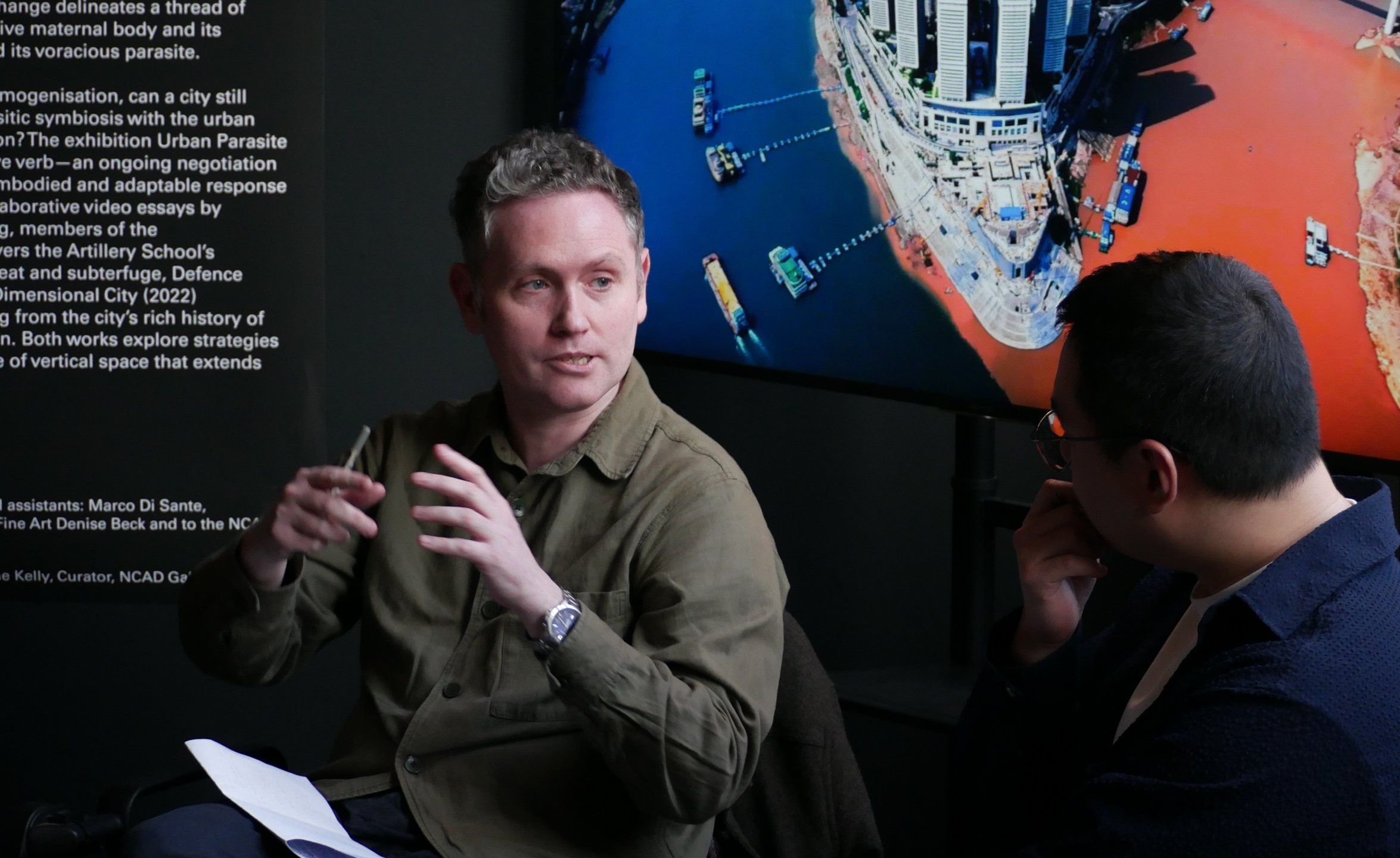URBAN PARASITE | An exhibition of Chongquig Work Institute artists Bao Dachen, Dong Xun, and Wu Jianping.
Exhibition times: 20 March - 2 April, 2025. Monday - Friday, 11AM-6PM.
城市寄生 | 重庆工作研究所-艺术家鲍大宸,董勋,吴剑平
展览时间:2025年3月20日-4月2日,周一至周五,11:00-18:00
URBAN PARASITE is programmed as part of the NCAD Gallery Student Open Call 2025, the Gallery is delighted to present URBAN PARASITE: An exhibition of Chongquig Work Institute artists Bao Dachen, Dong Xun, and Wu Jianping curated by Yifeng Wei, curator and NCAD School of Visual Culture PhD candidate.
作为2025年NCAD画廊学生开放征集计划的一部分,NCAD画廊荣幸呈现展览“城市寄生”,展映重庆工作研究所艺术家鲍大宸、董勋、吴剑平的两部合作影像散文,由策展人、NCAD视觉文化学院博士研究生魏逸丰策划。
PROGRAMME:
展览活动
Panel discussion: 19 March, NCAD Gallery Foyer, 5PM.
City as Methodology with Dr Jye O'Sullivan, Yifeng Wei, and Dr Karl Whitney.
专题讨论会: 3月19日,NCAD 画廊前厅,17:00
“城市作为方法论”——与 Jye O’Sullivan 博士、魏逸丰、Karl Whitney 博士共同探讨。
Exhibition opening & walk-through: 19 March, NCAD Gallery, 6PM.
Join curator Yifeng Wei on a walk-through of the URBAN PARASITE exhibition.
展览开幕 & 导览:3月19日,NCAD 画廊,18:00
由策展人魏逸丰导览,深入解读展览内容。
Exhibition Introduction
When the humid subtropical monsoon retreats, the shimmering vapour rising from the confluence of the Yangtze and Jialing rivers becomes ensnared once more between the endless mountains, forming the lingering fog that cloaks Chongqing, an inland city in southwestern China. Featuring such a unique landscape and climate, Chongqing is a city about disappearing. Its perennial mist once overshadowed the secrets of the nuclear plant during the Cold War and nowadays its vertically stacked buildings obscure the prying eyes of GPS satellites.
In the opening scene of Crazy Stone, a film set in Chongqing, an idling layabout flirts with a young woman aboard a cable car suspended between the two great rivers. “Whenever I look at the city from this angle,” he muses, “I feel strongly that the city is a mother and we live in her womb...maternity, I feel such a maternity on you...”“Vermin,” other passengers retort unanimously. This amusing exchange delineates a thread of intimacy between the city and its inhabitants—a protective maternal body and its fragile foetus, or in another sense, a hospitable host and its voracious parasite.
In an era of pervasive surveillance and technological homogenisation, can a city still serve as a sanctuary? How do its residents forge a parasitic symbiosis with the urban fabric when technology becomes a vehicle for oppression? The exhibition Urban Parasite at the NCAD Gallery reimagines ‘Chongqing’ as an active verb—an ongoing negotiation between people, landscape, and climate—offering an embodied and adaptable response to the current crises. This exhibition showcases two collaborative video essays by Chinese artists Dong Xun, Bao Dachen, and Wu Jianping, members of the Chongqing Work Institute. While Rear Area (2018) uncovers the Artillery School’s concealed history and Chongqing’s strategic role in retreat and subterfuge, Defence System of the Mountain City: Action Guide for a Three-Dimensional City (2022) conceptualises a non-transparent methodology, drawing from the city’s rich history of resistance, shaped by over seven centuries of adaptation. Both works explore strategies for survival within the urban matrix, weaving a narrative of vertical space that extends from the underground to the clouds.
展览介绍
当湿润的亚热带季风退去,长江与嘉陵江交汇处升腾的水汽再次被无尽的群山囚禁,凝结成笼罩重庆的绵长雾霭。这座位于中国西南腹地的城市,以其独特的地貌与气候,成为一座关于“消失”的城市。冷战时期的核工业秘密曾经隐匿于这片浓雾之下,今天,高耸叠加的楼宇又使GPS卫星难以窥探其肌理。
在电影《疯狂的石头》的开场,一名游手好闲的青年,在跨越两江的缆车上与一位年轻女子调笑:“每次从这个角度看这座城市,我都会觉得,它就像一个母亲,而我们生活在她的子宫里……母性,我在你身上感受到强烈的母性……” 乘客们随即齐声喝斥:“流氓!” 这一幽默的对话勾勒出城市与居民之间一丝难以言喻的亲密关系——城市既是庇护的母体,孕育着脆弱的胎儿;又是慷慨的宿主,养育着贪婪的寄生者。
在这个监控无处不在、技术趋于同质化的时代,城市是否仍能成为居民的庇护所?当科技不再是解放的工具,而沦为压迫的手段时,人们如何以“寄生”的方式与城市互利共生?“城市寄生”于NCAD画廊展出,将“重庆”重新定义为一个动词,一种人与地景、气候之间的协商方式,提供一种具象且可挪用的经验,以回应当下的危机。本次展览呈现了中国艺术家董勋、鲍大宸、吴剑平的两部合作影像散文,他们均为重庆工作研究所的成员。作品《后方》(2018)揭示了炮兵学校的隐秘历史,以及重庆在战时撤退与伪装中的战略角色。而《山城防御体系:三维城市行动指南》(2022)则提出了一种“非透明的方法论”,借鉴重庆丰富的抵抗历史,将其塑造为一座历经七百年演变的适应性堡垒。两部作品共同探讨了在城市矩阵掩护下的生存策略,编织了一段从地下延伸至云端的防御性的垂直空间叙事。








